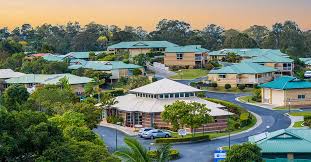Planning where to live in later life is one of the most important decisions you’ll make. For many older Australians, a retirement village Queensland offers a blend of comfort, independence, and access to support when needed.
These villages are designed for people aged 55 and above who want to enjoy a worry-free lifestyle while staying active and independent. A retirement village Queensland is not an aged care home. Instead, it offers a low-maintenance living space with access to shared facilities, health services, and a built-in sense of community.
Living in such a village helps reduce day-to-day responsibilities while allowing residents to enjoy their interests and connect with others.
Types of Retirement Villages in Queensland
Retirement villages in Queensland come in various types. Your choice depends on how much support you want now and in the future.
Independent Living
This setup suits those who can manage daily activities. Homes are easy to maintain and are often single-level units or apartments.
Assisted Living
Ideal for those who need some help with cleaning, meals, or daily routines. Support staff may be available on-site or on-call.
Co-located Villages
These offer both retirement living and aged care. They suit couples with different health needs or residents who want care options nearby.
Costs and Legal Considerations
Before you move in, it’s important to understand the financial and legal side of things.
Entry Contribution
Most villages ask for an upfront payment. This isn’t the same as buying a property but gives you the right to live there.
Ongoing Charges
Monthly or quarterly fees cover maintenance, facility use, and staff costs. These vary by location and services offered.
Exit Costs
A Deferred Management Fee (DMF) is often deducted when you leave. This is usually a percentage of your entry payment.
Legal Protection
The Retirement Villages Act 1999 in Queensland outlines your rights and the obligations of village operators. Always seek legal advice before signing any contracts.
What to Look For
Choosing the right village takes time. Here’s what you should check before making a decision:
Location
Is the village close to family, hospitals, shops, and public transport? A good location adds long-term convenience.
Healthcare
Some villages provide on-site nurses or GP visits. Others offer connections to nearby hospitals or health services.
Social Life
A strong community feel can improve quality of life. Check if the village runs regular events, outings, or group activities.
Amenities
Look for gyms, gardens, libraries, walking paths, and hobby rooms. These help residents stay active and mentally engaged.
Safety
Features like CCTV, emergency buttons, and on-site managers offer reassurance, especially for those living alone.
Services and Facilities
Most retirement villages in Queensland provide:
- Housekeeping: Optional cleaning, laundry, and room tidying services.
- Meals: Meal plans or communal dining options may be available.
- Transport: Shuttle buses help with shopping and medical visits.
- Recreation: Craft sessions, yoga, games, and movie nights encourage connection and fun.
- Emergency Support: Most villages have staff or systems in place for emergencies.
These features help create a safe, enjoyable environment for residents.
How to Apply
Most villages are open to Australians aged 55 and above. You can apply directly to the village, but the process takes time.
Application Steps:
- Visit and tour potential villages.
- Ask for disclosure statements and cost breakdowns.
- Review contracts with legal and financial advisers.
- Finalise the agreement and choose a move-in date.
Documentation may include proof of age, identity, and medical history.
Retirement Hotspots in Queensland
Queensland offers many ideal places for retirement living.
- Brisbane: Access to hospitals, transport, and urban amenities makes it a top choice.
- Gold Coast: A great pick for those who love the beach and an active lifestyle.
- Sunshine Coast: Peaceful, scenic, and full of community-focused villages.
Regional centres also offer more affordable homes and tighter-knit communities.
Why Over 50s Lifestyle Villages Are Gaining Popularity
A growing number of early retirees are choosing over 50s lifestyle villages. These differ from traditional retirement villages in several ways.
Firstly, most operate on a land-lease model. Residents own the home but lease the land. This means no stamp duty and often lower overall costs.
Secondly, over 50s lifestyle villages focus on wellness and community. Many offer pools, clubhouses, pet areas, and hobby spaces. These communities are built for people who want to stay active and independent.
Lastly, they provide privacy without isolation. Residents live in their own space but benefit from shared facilities and group events.
Conclusion
Your retirement years should offer freedom, peace of mind, and the right kind of support. By understanding what villages offer, what to look for, and what to expect financially, you can make a decision that fits your lifestyle and future needs.


